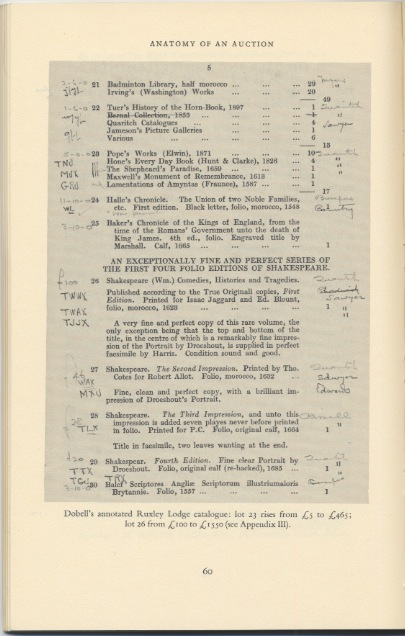A Book Still Worth Reading: Anatomy of an Auction
- by Bruce E. McKinney

Subsequent sales used the same catalogues with new prices in code
The re-sales worked this way.
All Items bought by the ring were offered in a first re-auction. Those items for which no further advance was offered were declared the property of the initial high bidder. Where there were higher bids control of the item shifted from the original named buyer to the new owner. This ownership in turn was then potentially contested in the second re-auction. For those items for which no higher bids were offered the second round owner then won the lot. Items receiving higher bids became the property of the new winner who then was required to submit their items to one more round of bidding. In the final round all high bids were declared winners and the ring bidding ended. In this way items that brought a pittance in the public auction rose, in many cases, to astronomical levels during the succession of re-auctions, in one case realizing 60 times what it brought in the public sale.
Members of the ring then divided all monies paid in excess of the original winning bids equally for the first two rounds to all participants and then among continuing bidders in the final two rounds. For those who participated through to the final round the prize was £470 pounds each [roughly equal to a year’s income at that time for most dealers] intended to buy their silence. For participants in the first two rounds their take was £165.
This may not at that time have been illegal but it was certainly immoral. No doubt, many of these ring member’s prior generations had sold the Foleys some of their books.
Later accusations and recriminations would breach the silence out after a few of the ring participants concluded others in the group had acted dishonestly. Shocking!
How could this happen?